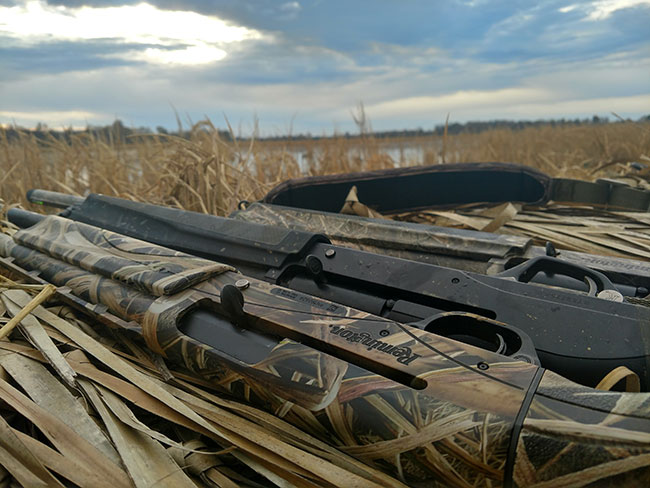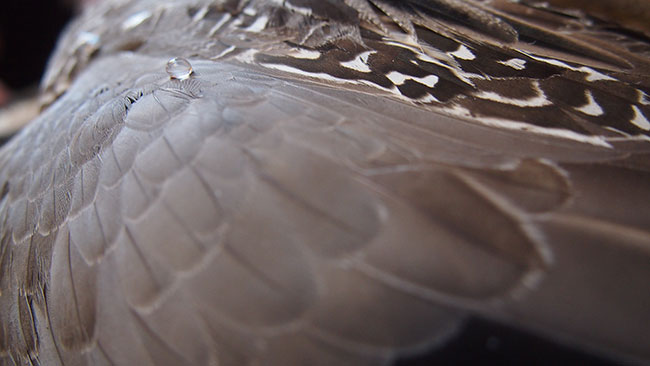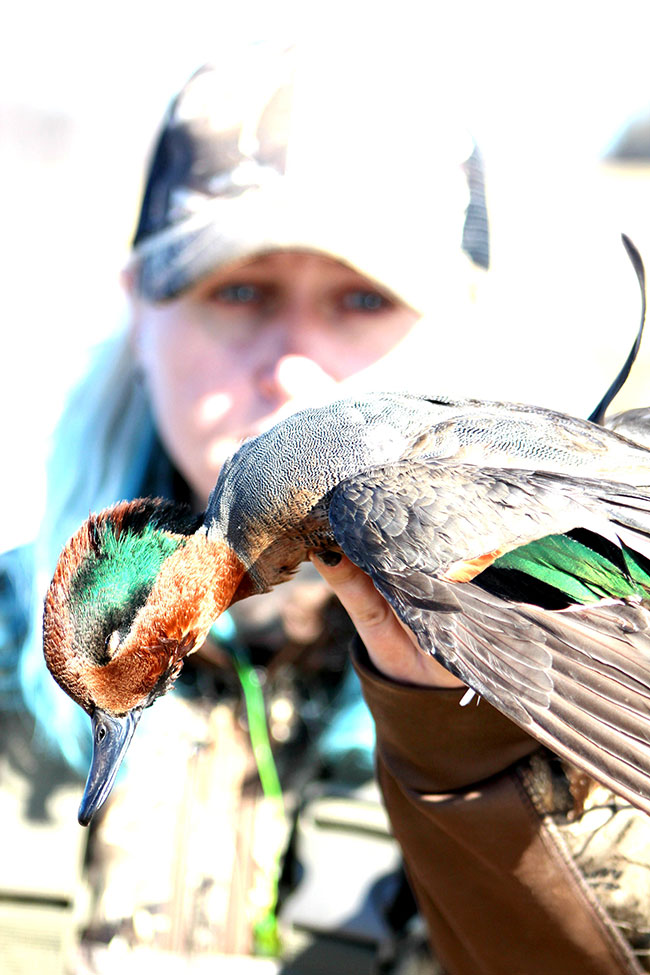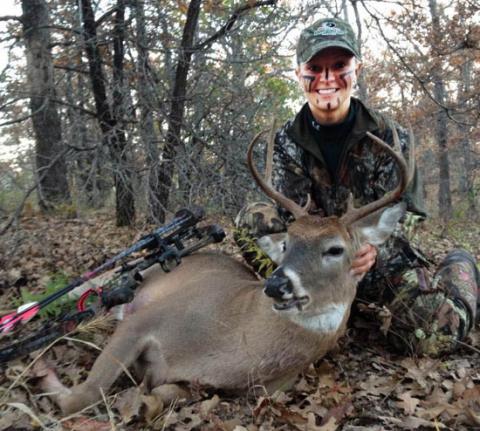By Kat Ainsworth
The sky is yet sooty-dark when we hear them: the erratic flutter of the green-winged teals, the steady rush of northern shovelers, the rustling swish of a lone wood duck. The ducks’ individual flight patterns joined in a low, roaring hum, a sound never forgotten once heard; the sound duck hunters live to experience time and again. It rivals the caffeine buzz of morning coffee – a Remington travel mug full of which rests on the low bench across from me – and on that morning in Arkansas, it means only one thing: the hunt has officially begun.

Of course, duck hunting requires guns and one side effect of being an outdoor writer is the perpetual rotation of firearms. Different hunts mean different guns without predictable repeats; loving a platform doesn’t mean I’ll have the opportunity to use it again anytime soon. On this particular hunt, however, I was rotating between a pair of shotguns I’m rather fond of: the Remington Versa Max Waterfowl Pro and V3 Field Sport. Thanks to its inception taking place in 2010, the Versa Max is the elder of the two (the V3 was officially launched in 2015). This trip, both shotguns were chambered in 12-gauge, each featuring reduced recoil thanks to their gas-operated Versaport systems. Less felt recoil while using waterfowl loads for hours on end? Yes, please, and thank you.
That first morning I aimed my V3 Field Sport over a flooded rice field. With the V3s 28-inch barrel and Mossy Oak Shadow Grass Blades camo finish, I’d be able to reach out and touch my targets while staying relatively concealed within the grass-blade-shrouded pit. There were eight of us crowded into the five-person pit; it was a valiant attempt to keep us all together, an attempt we later disregarded by breaking into smaller groups. Eight people – one of which was Landon, a guide from our hosting outfitter, Stan Jones Mallard Lodge – meant a near-constant symphony of 12-gauge Remington 3” 1 ¼ ounce Hypersonic Steel. Or, if not a symphony, a barrage. And as the first barrage of the day began, the first splash of vibrant color fell: a wood duck drake dropped by fellow hunter Kenny Corder. Corder’s drake was the first of several woodies to fall and the beginning of dozens of ducks taken over the course of the hunt. I took my own wood duck drake later and, in fact, by the end of the weekend had amassed a versatile collection. As a group we took over half a dozen species, drakes and hens alike, making our waterfowl mark using my favorite method: color. Lots of color.
The wood duck drake has – in my opinion – some of the most startlingly beautiful plumage of all 41 North American waterfowl species. Woodies are moderately-sized dabbling ducks; at approximately 20 inches long with a wingspan of around 28 inches, a mature wood duck is still 25-percent smaller than their mallard counterpart. A century ago this was a species nearing extinction but today they’re thriving, an improvement made in part through the conservation efforts of hunters. (Although excessive hunting did play a role, the early twentieth-century decline of woodies was largely due to the decimation of bottomland hardwood forests through clear-cutting.) In fact, those who fail to comprehend just how far hunters go to save a species and further its growth need look no further than the wood duck: the placing of thousands of nest boxes and donations made to wildlife conservation groups were and are just two of the ways hunters encourage population growth. Respecting limits is yet another method used; for example, in Arkansas the individual daily bag limit for wood ducks is three. But I digress.
The array of complementary colors on a wood duck doesn’t just catch the eye, it holds it. Drakes have rich chestnut breasts, shimmering forest green head crests, and crimson eyes – and that’s only the beginning. Even wood duck hens are beautiful with their natural raw umber bodies and dramatic white teardrops swirled around dark eyes. Juvenile males are colored similarly to the females.


Whether you call them woodies, Carolina ducks, or swamp ducks, you never forget your first and hopefully never lose that sense of wonder holding them in your hands. In Arkansas, long after everyone but Corder – the aforementioned shooter of the hunt’s very first woodie – had retreated indoors for a post-hunt breakfast, I sat outside on the grass with some of the morning’s ducks. Among them, a few wood duck drakes, feathers luminescent in the mid-morning sunlight. Corder stood by while I photographed ducks in my usual state of fascination at their colors and, yes, the sheer awesomeness of nature. His Labrador, Ava, patiently posed with a row of green-winged teal and woodie drakes she’d retrieved, her own chocolate coat taking on a copper cast as the sun made its ascent. It wasn’t just about needing pictures for articles, it was about appreciating what we’d taken. It was about a moment of reflection.
We all duck hunt for varying reasons. Some are dedicated wingshooters after the challenge of hitting moving targets, some want meat, and some are chasing the waterfowl slam. There is one thing we have in common: the opportunity to hold a multi-colored bird in our hands while it’s still warm. It doesn’t matter if your own faithful version of Ava drops it into your waiting hands or you retrieve it yourself. It’s your bird, your take, your gift. And while species such as the wood duck shimmer and flash iridescent greens and purples, even the supposedly drab ones like mallard hens possess unique beauty.
Maybe you’ve been a waterfowl hunter for decades; maybe it’s only been days since your first duck fell to the water following your first successful shot. Maybe you’ve completed the waterfowl slam (maybe not – maybe you don’t care). Wherever you fall in the broad spectrum of duck hunters, do me one favor: take the time to appreciate the awesomeness of that duck when it’s placed in your hands. Look closer. Notice their many colors. Admit there are no “trash” ducks, and be grateful for every day you’re out with a shotgun in your hands. Be willing to have fun, do a little dance when you finally nail a green-winged teal, or a pintail – talking about you, Ben Cole – and be in awe. Duck hunting is, after all, awesome. Be a duck hunter. Be awesome.






























